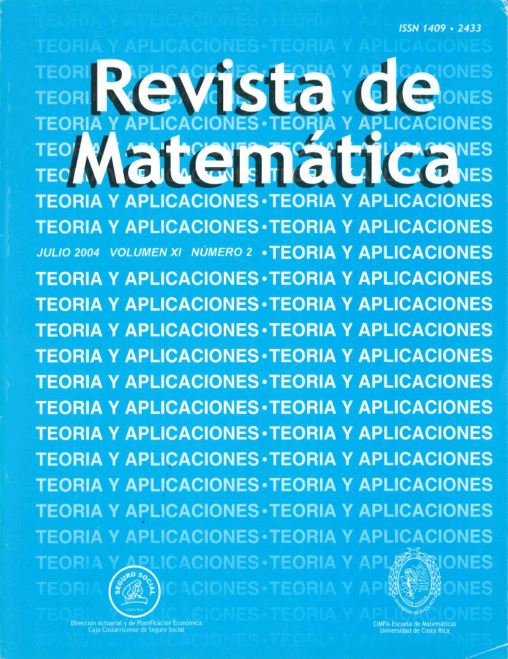Abstract
Described within is the problem of finding near-minimum dominating subsets of a given graph by rook domains. Specifically, we study the graphs of the kind Znp and Zn3×Zm2 and introduce a simulated annealing algorithm to compute upper bounds of the size of minimum dominating subsets.
We demonstrate the effectiveness of the algorithm by comparing the results with a previously studied class of graphs, including the so-called “football pool” graphs and others. We give some new upper bounds for graphs of the kind Znp, with p ≥ 4. The codes of some dominating subsets are given in an appendix.
References
Aarts, E.; Korst, J. (1990) Simulated Annealing and Boltzmann Machines. A Stochastic Approach to Combinatorial Optimization and Neural Computing . John Wiley & Sons, Chichester.
Biggs, N. (1974) Algebraic Graph Theory. Cambridge University Press.
Blokhuis, A.; Lam, C.W.H. (1984) “More coverings by rook domains”, Journal of Combinatorial Theory, Series A 36: 240–244.
Cameron, P.J.; van Lint, J.H. (1991) Designs, Graphs, Codes and their Links. London Mathematical Society Student Texts, 22, Cambridge University Press.
Davies, R.; Royle, G.F. (1997) “Graph domination, tabu search and the football pool problem”, Discrete Applied Mathematics 74(3): 217–228.
Garey, M.; Johnson, D. (1979) Computers and Intractability: a Guide to the Theory of NP-Completeness. W.H. Freeman, San Francisco.
Hämäläinen, H.O.; Rankinen, S. (1991) “Upper bounds for football pool problem and mixed covering codes”, Journal of Combinatorial Theory, Series A, 56: 84–95.
Knuth, D.E. (1981) Seminumerical Algorithms. Second edition, volume 2 of the book The Art of Computer Programming . Addison-Wesley, Reading, Mass.
Koschnick, K.U. (1993) “A new upper bound for the football pool problem for nine matches”, Journal of Combinatorial Theory, Series A, 62: 162–167.
van Laarhoven, P.J.M. (1988) “Theoretical and computational aspects of simulated annealing”, Centrum voor Wiskunde in Informatica, Tract 57.
van Laarhoven, P.J.M.; Aarts, E.J.L.; van Lint, J.H.; Wille, L.T. (1989) “New upper bounds for the football pool problem for 6, 7 and 8 matches”, Journal of Combinatorial Theory, Series A, 52: 304–312.
Österg̊ard, P.R.J.; Hämäläinen, H.O. (s.f.) “A new table of binary/ternary mixed covering codes”, Preprint.
Österg̊ard, P.R.J. (1994) “New upper bound for the football pool problem for 11 and 12 matches”, Journal of Combinatorial Theory, Series A, 67: 161–168.
Österg̊ard, P.R.J. (1995) “A combinatorial proof for the football pool problem for six matches”, Journal of Combinatorial Theory, Series A: 160–163.
Piza, E.; Trejos, J.; Murillo, A. (1998) “Global stochastic optimization techniques applied to partitioning”, in A. Rizzi et al. (Eds.) Advances in Data Science and Classification, Springer Verlag, Berlin: 185–191.
Wille, L.T. (1987) “The football pool problem for 6 matches: A new upper bound obtained by simulated annealing”, Journal of Combinatorial Theory, Series A, 45: 171–177.





